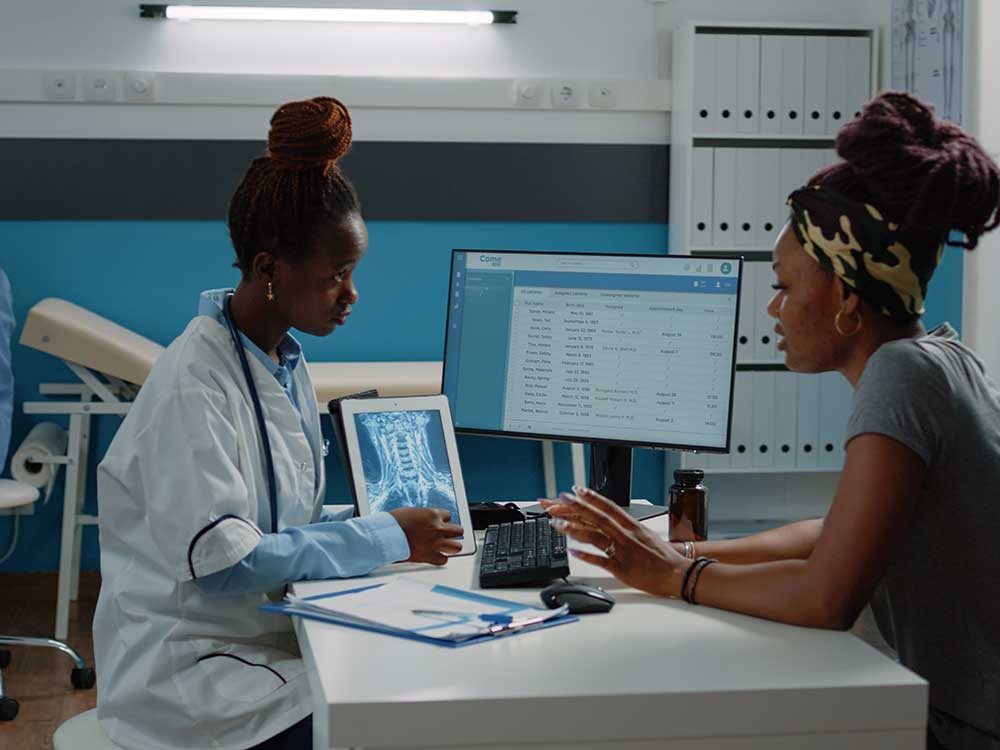How to Improve Efficiency in Medical Administration with Modern Tools
How to Improve Efficiency in Medical Administration with Modern Tools
Blog Article
Finest Practices in Medical Administration for Improving Effectiveness and Minimizing Prices
In the ever-evolving landscape of medical care, the search of best practices in medical administration is extremely important for improving performance and curbing costs. By integrating sophisticated technologies such as electronic wellness records and telemedicine, medical care companies can simplify procedures and boost individual care.
Leveraging Advanced Modern Technology
In today's rapidly progressing health care landscape, leveraging innovative technology is no longer optional however crucial for effective medical management. The combination of electronic solutions into medical care systems has actually transformed the method centers run, enhancing processes and enhancing client treatment. Electronic Health And Wellness Records (EHRs) are crucial, giving thorough individual information that can be accessed quickly by accredited personnel, hence decreasing redundancy and lessening errors. By streamlining person details, EHRs remove the need for difficult documentation and promote smooth interaction amongst health care suppliers.
Telemedicine is another technological advancement that has actually transformed client interaction. It provides convenience for both people and health care experts by enabling remote examinations, which can lower the demand for in-person check outs and enhance visit scheduling. Furthermore, telehealth systems can prolong medical care accessibility to rural or underserved locations, bridging voids in treatment distribution.
Moreover, the use of Artificial Knowledge (AI) and device understanding is ending up being progressively prevalent in anticipating analytics, permitting very early detection of potential wellness concerns and more educated decision-making. These modern technologies, when integrated efficiently, can enhance analysis accuracy and personalize patient therapy plans, inevitably leading to improved health care outcomes and functional performance.
Optimizing Source Allocation
By tactically handling resources such as workers, devices, and finances, health care facilities can considerably improve their functional efficiency, improve client results, and decrease unnecessary expenses. The initial step in optimizing source allowance includes performing an extensive evaluation of present properties and recognizing areas where sources might be underutilized or overextended.
Prioritizing source allocation based on patient requirements and solution needs is necessary. Implementing flexible staffing versions can additionally enhance labor resources by adjusting workers allocation in reaction to changing person volumes.
Monetary sources should be diligently kept track of and allocated with strategic insight to support both short-term operational demands and lasting institutional objectives. This consists of investing in training programs that improve staff expertises and embracing energy-efficient practices that decrease operational costs (medical administration). Inevitably, a maximized resource allowance technique cultivates a lasting healthcare atmosphere that is receptive, effective, and monetarily prudent
Streamlining Workflow Processes
When health care facilities aim to improve functional effectiveness, enhancing workflow procedures comes to be a pivotal focus. Effective workflows lessen redundancy, remove unnecessary steps, and enhance sychronisation among health care professionals. This strategy not only speeds up solution delivery however also boosts the high quality of person treatment.

Following, innovation integration plays a significant role in simplifying workflows. Executing digital wellness documents (EHRs) and computerized medical professional order you can look here access (CPOE) systems minimizes documentation, decreases human mistake, and makes certain details comes to all pertinent employees. Furthermore, leveraging telemedicine systems can simplify individual examinations and follow-ups, decreasing the strain on physical infrastructure.

Eventually, streamlined operations result in cost reductions and boosted individual contentment, fostering a more lasting healthcare atmosphere.
Enhancing Information Management
Building upon structured workflows, maximizing data management becomes a crucial element in advancing healthcare management. Effective data monitoring systems are essential for keeping exact patient records, boosting decision-making, and guaranteeing conformity with regulatory criteria. By carrying out durable data management services, healthcare centers can boost Website the top quality of individual care while concurrently decreasing functional costs.
One secret element of improving information administration is the assimilation of advanced electronic wellness record (EHR) systems. These systems facilitate the smooth exchange of client info throughout different departments, decreasing replication of examinations and reducing mistakes. A well-designed EHR system supports data analytics, making it possible for medical care service providers to identify trends and make informed choices concerning client care.
Moreover, guarding person information is critical. Taking on comprehensive cybersecurity measures, including encryption and regular audits, ensures the integrity and privacy of delicate information. This not only safeguards clients but likewise maintains the institution's credibility.
Investing in staff training is one more critical factor. Educating healthcare professionals on information monitoring techniques boosts their ability to efficiently use technology, leading to boosted patient end results. Finally, boosting information management with innovative modern technology and extensive training is important for accomplishing efficiency and cost reduction in medical administration.
Fostering Collaborative Interaction
A crucial component ahead of time medical administration is promoting collective communication among health care specialists. Effective interaction is paramount for guaranteeing smooth client care, optimizing treatment results, and lessening errors. By urging open dialogue and coordination across multidisciplinary groups, healthcare organizations can enhance their operational effectiveness and reduce unneeded expenses.
Central to this strategy is the combination of communication innovations such as electronic health and wellness records (EHRs) and safe try this site messaging platforms, which help with the rapid exchange of essential person info. These tools allow health care companies to gain access to and share data in real time, making sure that all group participants are informed and straightened in their decision-making procedures. Furthermore, routine team meetings and interdisciplinary rounds can further promote a culture of cooperation and liability.
Educating programs concentrated on enhancing interaction abilities are likewise crucial. These programs can help personnel create the ability to communicate info clearly and listen proactively, therefore decreasing misunderstandings and promoting a supportive workplace. In enhancement, taking on standard interaction procedures, such as SBAR (Situation, History, Assessment, Recommendation), can improve the exchange of details, making sure that crucial information are conveyed succinctly and properly. Eventually, promoting collaborative interaction brings about improved medical care distribution and price savings (medical administration).

Final Thought
Incorporating advanced technology, such as electronic health documents and telemedicine, together with maximized resource allocation and structured process procedures, is important for boosting performance in clinical administration. Efficient data monitoring and cultivating collaborative communication among healthcare groups are crucial for lessening redundancies and improving care quality. By prioritizing preventative care and involving in high quality enhancement initiatives, healthcare organizations can attain considerable expense savings and improved patient outcomes, consequently guaranteeing sustainable health care distribution in an increasingly complex atmosphere.
Report this page